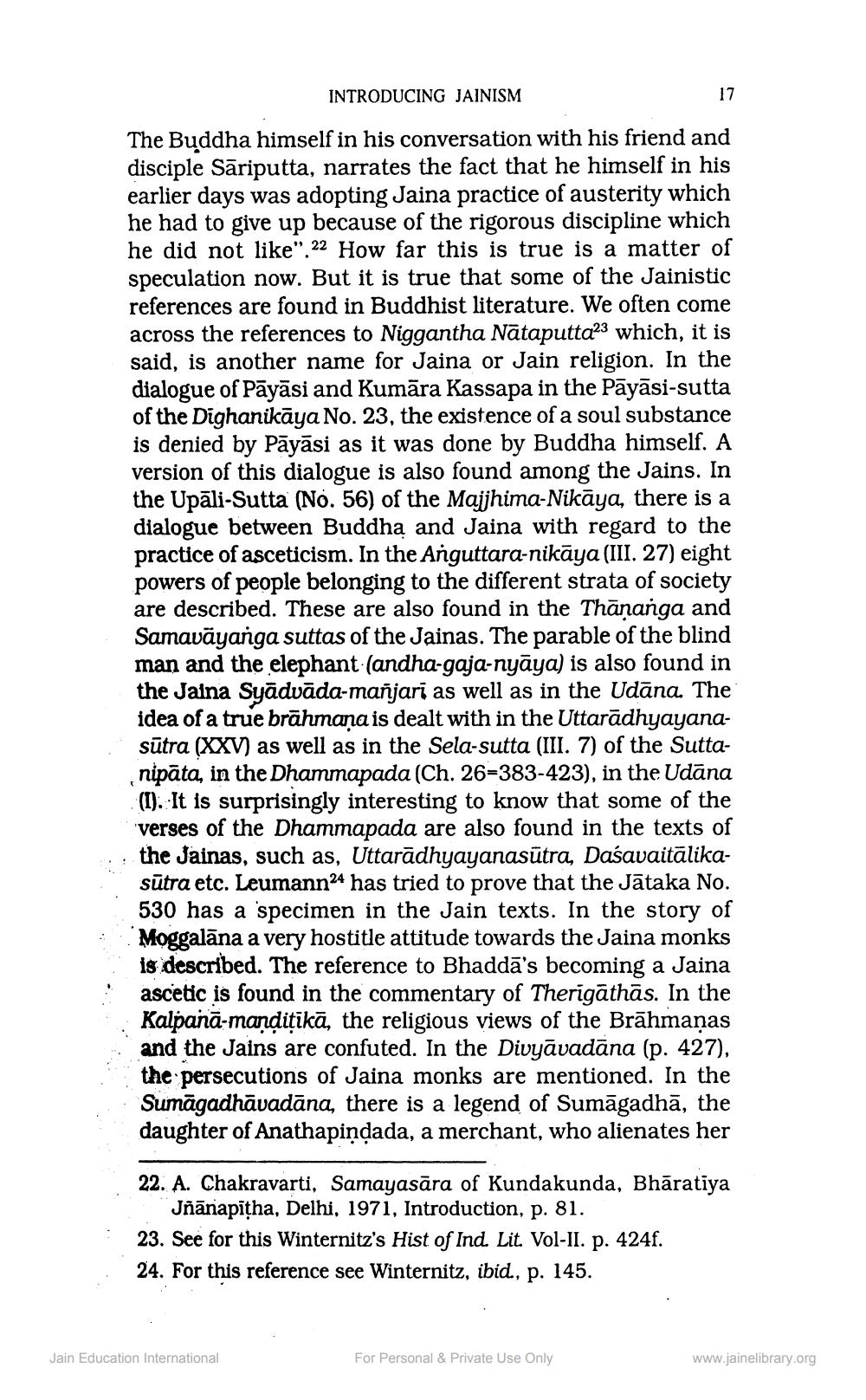________________
INTRODUCING JAINISM
17
The Buddha himself in his conversation with his friend and disciple Sāriputta, narrates the fact that he himself in his earlier days was adopting Jaina practice of austerity which he had to give up because of the rigorous discipline which he did not like". 22 How far this is true is a matter of speculation now. But it is true that some of the Jainistic references are found in Buddhist literature. We often come across the references to Niggantha Nātaputta23 which, it is said, is another name for Jaina or Jain religion. In the dialogue of Pāyāsi and Kumāra Kassapa in the Pāyāsi-sutta of the Dighanikāya No. 23, the existence of a soul substance is denied by Pāyāsi as it was done by Buddha himself. A version of this dialogue is also found among the Jains. In the Upāli-Sutta (No. 56) of the Majjhima-Nikāya, there is a dialogue between Buddha and Jaina with regard to the practice of asceticism. In the Anguttara-nikāya (III. 27) eight powers of people belonging to the different strata of society are described. These are also found in the Thānanga and Samavāyanga suttas of the Jainas. The parable of the blind man and the elephant (andha-gaja-nyāya) is also found in the Jalna Syāduāda-manjarī as well as in the Udāna. The idea of a true brāhmana is dealt with in the Uttarādhyayanasūtra (XXV) as well as in the Sela-sutta (III. 7) of the Suttanipata, in the Dhammapada (Ch. 26-383-423), in the Udāna (I). It is surprisingly interesting to know that some of the verses of the Dhammapada are also found in the texts of . the Jainas, such as, Uttaradhyayanasūtra, Dasavaitālika
sūtra etc. Leumann24 has tried to prove that the Jātaka No. 530 has a specimen in the Jain texts. In the story of Moggalāna a very hostitle attitude towards the Jaina monks is described. The reference to Bhadda's becoming a Jaina ascetic is found in the commentary of Therigāthās. In the Kalpana-mandițīkā, the religious views of the Brāhmaṇas and the Jains are confuted. In the Divyāvadāna (p. 427), the persecutions of Jaina monks are mentioned. In the Sumāgadhāvadāna, there is a legend of Sumāgadhā, the daughter of Anathapiņdada, a merchant, who alienates her
22. A. Chakravarti, Samayasāra of Kundakunda, Bhāratiya
Jñānapīķha, Delhi, 1971, Introduction, p. 81. 23. See for this Winternitz's Hist of Ind. Lit. Vol-II. p. 424f. 24. For this reference see Winternitz, ibid., p. 145.
Jain Education International
For Personal & Private Use Only
www.jainelibrary.org




